I'm just gonna leave that here, in case anyone is not familiar with the term:
https://en.wikipedia.org/wiki/Hungry_gap
At the end of winter in the temperate climate (esp cold temperate), there's this awkward period, when nothing grows yet, but the food from last year's crop is diminishing to almost zero. That period is know as "the hungry gap" (and by the way, it's not a coincidence that the Christian lent is during that period).
Nowadays basically no one in a developed nation knows about that period, because food is abundant year around. Still, knowing the traditions and customs of the past could help us to better prepare for the future.
In early winter and even up to midwinter there's food on the trees still. Like medlars!
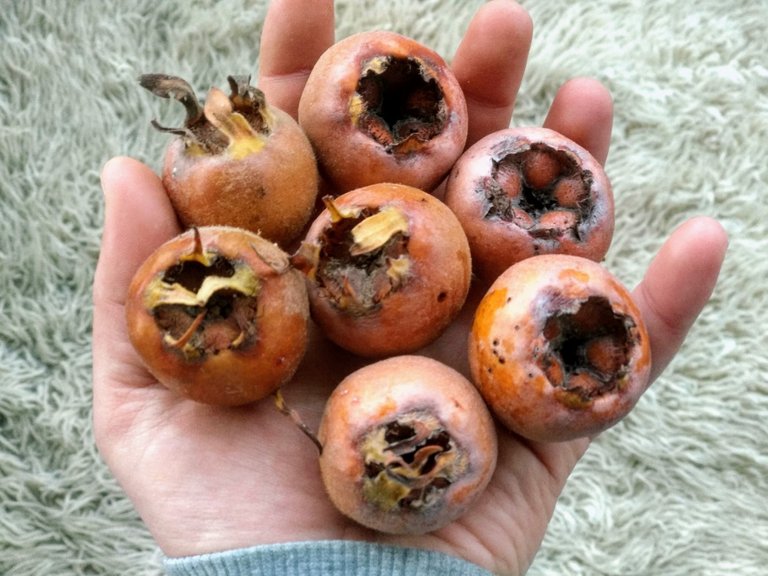
They need the freezing temperatures in order to start the process of bletting. So it's best to just leave them on the tree and if it's not some weird abnormal warm winter, usually about New Years and well into January the medlars are ready to eat.
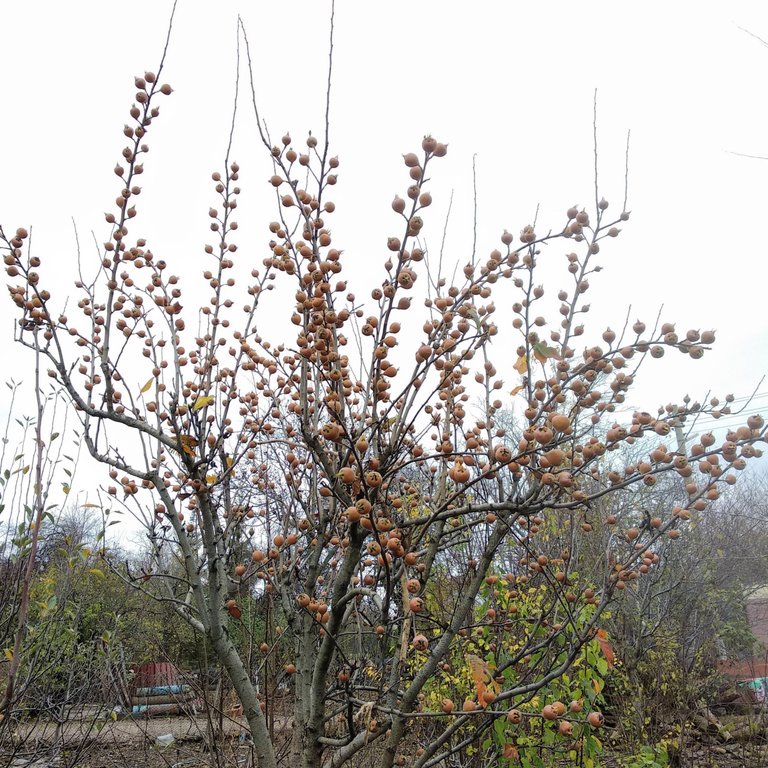
There are certain varieties of apples as well that don't readily drop their ripe fruit. That helps the fruit to stay on the tree and with winter apples, freezing temperatures don't destroy the fruit. Like those prime specimens in mid-January after 2 weeks of -10C temperatures.
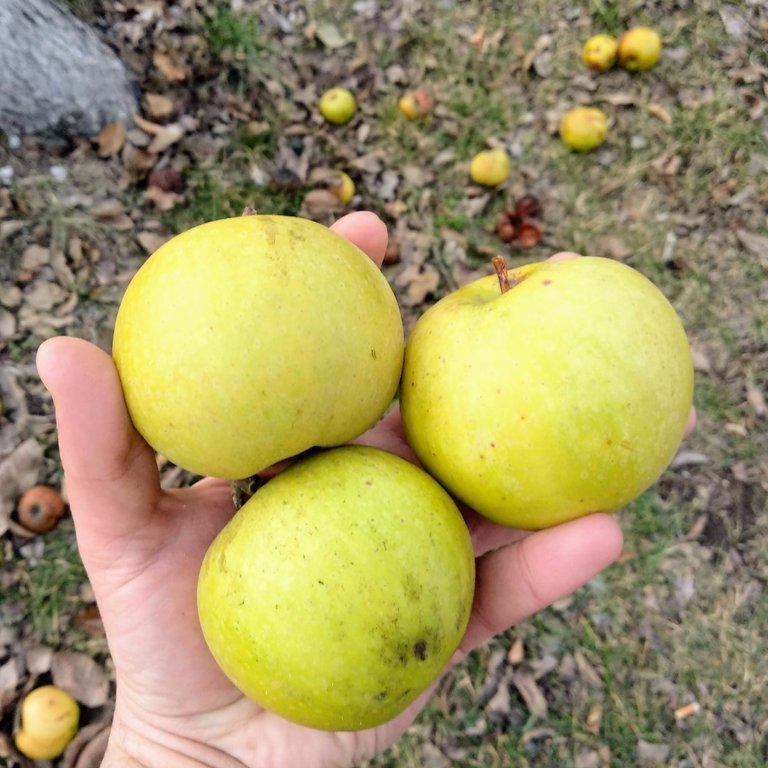
You can see how many are still hanging on the tree, even though the are a few dozen kilos on the ground, after a winter storm.
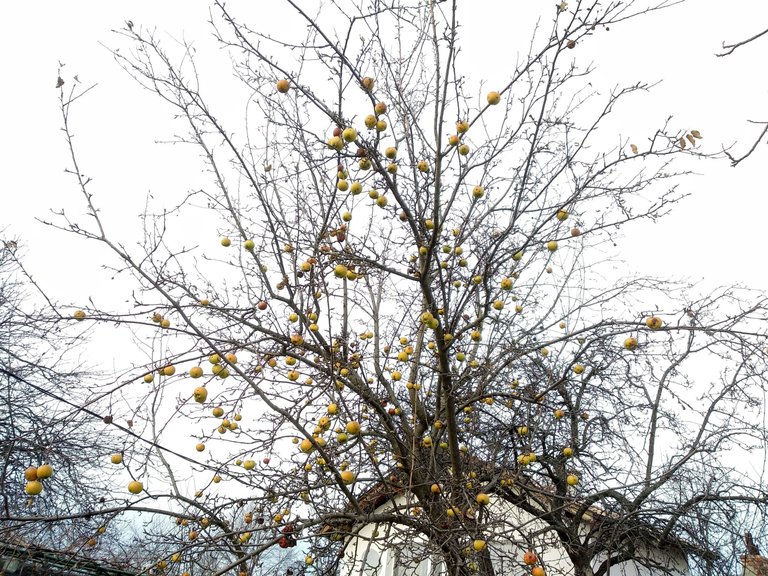
Another crop that's considered a winter staple and could be stored in the ground if the temperature is not permanently below -10C and the ground is frozen solid for extended periods of time (which is somewhat mitigated by a 20 cm straw mulch) is turnip, as well as radish.
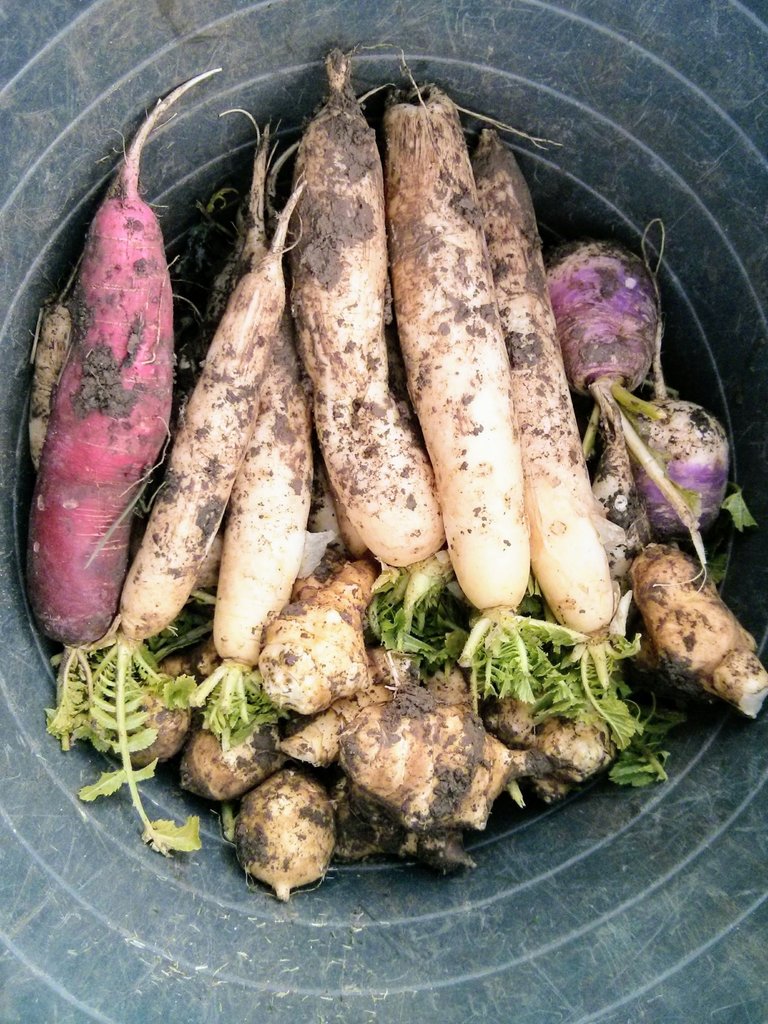
There's also kale that doesn't really grow much in winter, but can be harvested until the heavy snows and really cold weather sets it, usually in February, when even the kale dies back to the root and sometimes the whole plant. Along with it green garlic and some other cold tolerating leafy greens can be picked but at some point after mid winter there's not much left outside in the garden!
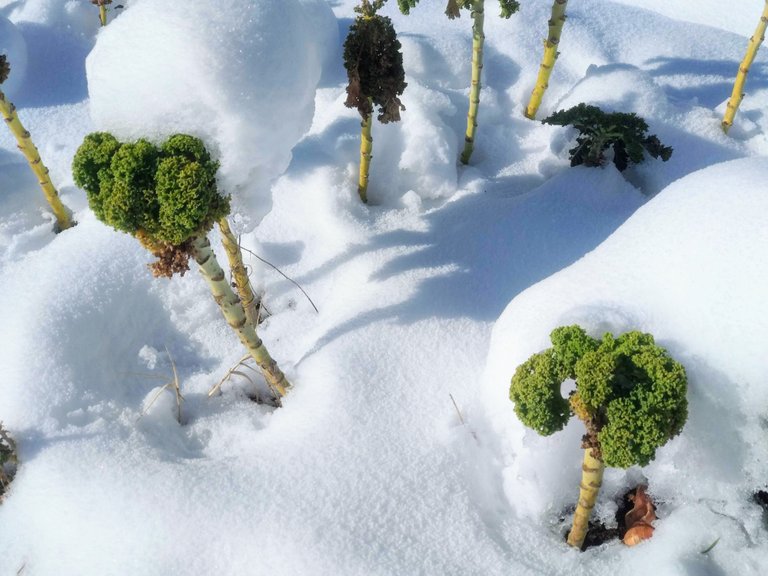
So that leads us to the main plant food that can be found outside in the garden after mid winter and even into spring ... (drumroll) ... Helianthus tuberosus!
Known lovingly as fartlumps or sunroot, the Jerusalem Artichoke can be harvested from early October to early May. I've dug out buckets of sunchokes from under a foot of snow and from frozen ground - perfect quality. No need for indoor storage or special conditions of refrigeration or canning. Stores perfectly where it grows. Good eating raw, grated, steamed, but excellent oven roasted and lacto-fermented similar to sauerkraut or kimchi with the added probiotic bonus.
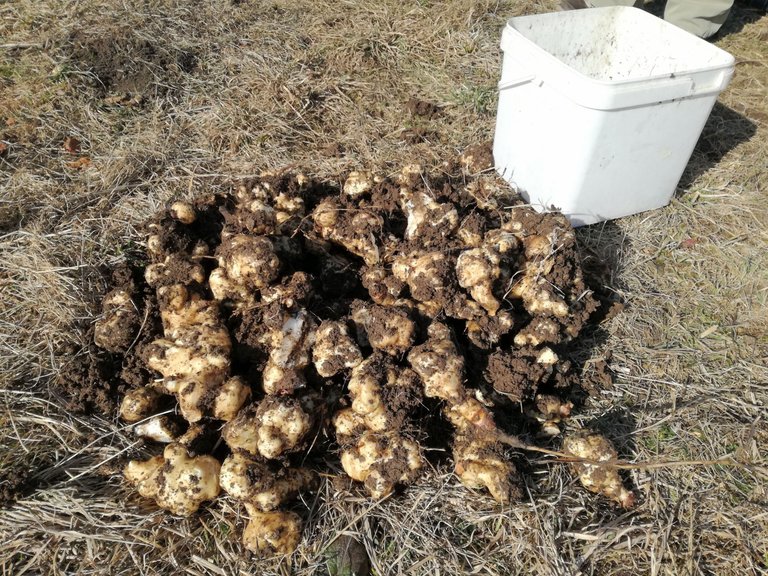
If push comes to shove, that's one of the very few foods in our climate that can save you from starvation with 0 requirements. Sure, if you have canned food and full freezer and dry meats and fruit and nuts, that's the best. But in the context of that blogpost, I'm looking for plant foods in the garden that do not require any technological input or processing or special storage, stuff that will be very helpful if (or when) the SHTF.
We've dug more than 50 kilos from a small 5 square meter patch in our garden. It's easy to imagine how a slightly bigger grown in the wild patch and just slightly cultivated could provide for numerous families. And even though we do shop in the supermarket, everything the garden provides is immensely healthier and adds to our resilience.
Especially if it helps us bridge the hungry gap!
I'm nearly frozen solid just reading this. In the more extreme latitudes, humans need more and more carbon-based resources to survive, and I can't even begin to imagine how the original humans survived these harsh conditions. I've lived near the equator for over 10 years now, at latitudes where food grows in abundance year-round, but I do miss some cold-weather fruits and vegetables at times, especially blueberries.
Good to know what you can eat and harvest in the in-between times. Thanks for sharing.
@NaturalMedicine supports wellness of body, mind, soul and earth on HIVE.
Come say hi via Lotus Chat or drop by our Hive Community - we'd love to have you!
Well I have 0 experience outside the cold temperate climate so just reading the word "equator" made me sweat profusely and maybe faint a bit from the heat :D But that might be just because I'm sitting too close to the wood burner, sipping mulled wine with quince and currants :)
I think the original-original (you know, like the OG Homo :D) humans survived mainly in climates similar to yours, as the energy and tools requirements are very very much lower over there. Of course, each place has its up and downsides and I really, really enjoy the fact humans had the adventurous spirit to explore, adapt and evolve over the last 2 million years.
Otherwise, I cannot imagine 8 billion people crammed along the tropics... brrr got the goosebumps just by thinking about it!
I know of medlars and how they are eaten mushy. Here in New England, I can't leave stuff in the ground and hope to harvest, as we typically freeze up to 4' down. And I gave up leaving kale in as it never survived. Not this year! The winter was so mild, the kale was still good until February! It was only left due to circumstances during the end of the year. And was not harvested, though it could have been.
But I typically grow enough to get me into June, stored in the root cellar. I am still eating my kabocha squash, going to cook one up today, with my onions and garlic.
I traded some sunchokes for some strawberries a few years ago, and it's one of the best deals I ever made. I was told they would compete well with our many wild weeds, and that was absolutely true. I tossed a handful of bulbs in two different spots on my less cultivated property, and today they produce enough healthy tubers all by themselves to keep me from starving, if it came to that. I encourage everyone who asks me about gardening, homesteading, prepping, or landscaping, to plant some of these!